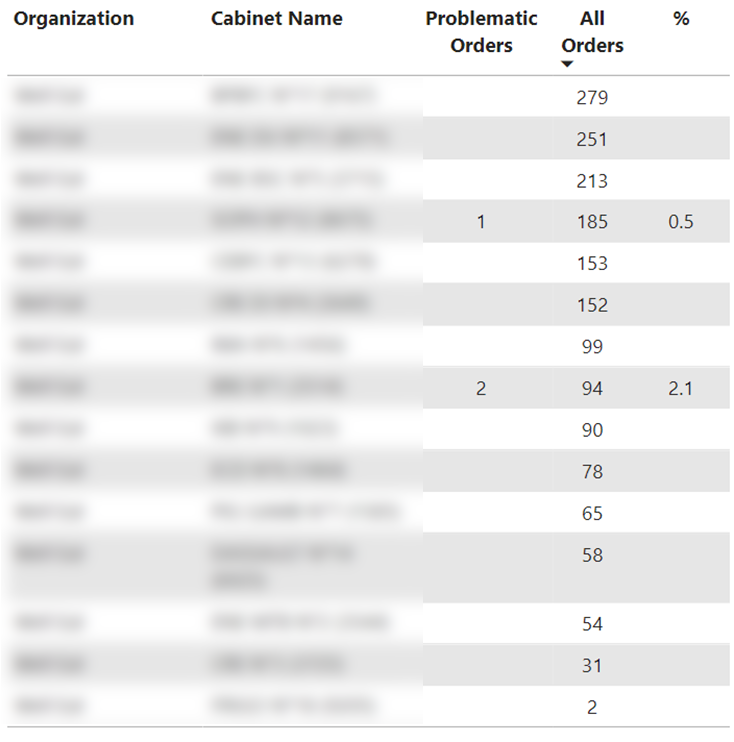Using data to spot and fix problems in vending machines
In today’s digital-driven world, data is an invaluable asset for businesses everywhere. In this post we’re spotlighting how Selfly Store is using data to identify problems and help enhance operations for vending machine operators across 21 European countries. Let’s delve deeper into this pivotal role of data!
1. Spotting anomalies with automated daily reporting
At Selfly Store, we rely on daily reports to keep a helping eye on our customers’ vending machines. These reports tell us how the machines are working and let us know if something seems off. For example, we identified machines that didn’t provide the data we expect, such as missing temperature readings. Upon inspection, we discovered a software component responsible for reporting temperature was faulty. Thanks to this data-driven approach, we were able to identify and fix this issue, enhancing our machines’ reliability and performance.

Picture 1: Selfly Freezer temperature data. The graph is showing “spikes” when the freezer is de-frosted and measured from the cooling cassette, and thus not reflecting temperature in products inside the cabinet, which will remain chilled.
2. Checking how often data is shared
We look at how often our customers’ fridges and freezers talk to the Selfly Cloud, our software. If they don’t communicate as much as they should, there might be a connection problem which is typically out of our direct control – connections are typically dependent on local mobile operators’ coverage and the local conditions at the site of installation. Without checking this data, it’s hard to see these issues and conduct further investigation. So, thanks to monitoring the data, we make sure everything stays connected and works smoothly.
3. Watching over transactions
We always keep a keen eye on sales transactions from our customers’ machines, expecting them to go smoothly. So, if a particular cabinet would have incomplete sales, it will stand out. We then dig deeper to understand the reason. It might be a tech hiccup or perhaps an operational mistake. Uncovering these rare glitches helps us continuously improve, ensuring most transactions complete without a hitch.

Picture 3: Table from the Selfly Cloud showing number of problematic orders (transactions) per customer and cabinet over a chosen time period.
4. Human insight and the emerging role of AI
At present, we prioritize making critical data easily understandable for our human analysts. Though our automated systems are invaluable, the nuanced insights from a human perspective cannot be overlooked. As we progress further, we’re actively exploring AI tools to identify patterns. With Generative AI, there’s potential to tap into our extensive archive of customer communications and product documentation, thus refining our responses and better predicting our partners’ requirements. Importantly, all these advancements are undertaken with strict adherence to current legislation and privacy guidelines, ensuring trust and transparency with our partners.
In conclusion
The use of data and analytics in our vending operations has been pivotal in identifying and addressing problems. By closely monitoring performance and transaction data, we can spot anomalies, identify their causes, and quickly act on them. While we still rely on human analysis for certain tasks, we’re currently exploring how to push the boundaries by incorporating AI into our operations. As we continue to evolve, data will undoubtedly remain a vital tool in our mission to deliver top-quality vending services. Stay tuned for our next blog where we will explore how data helps vending machine operators leverage discounts and reduce waste.
Read the other blogs in the series here:
